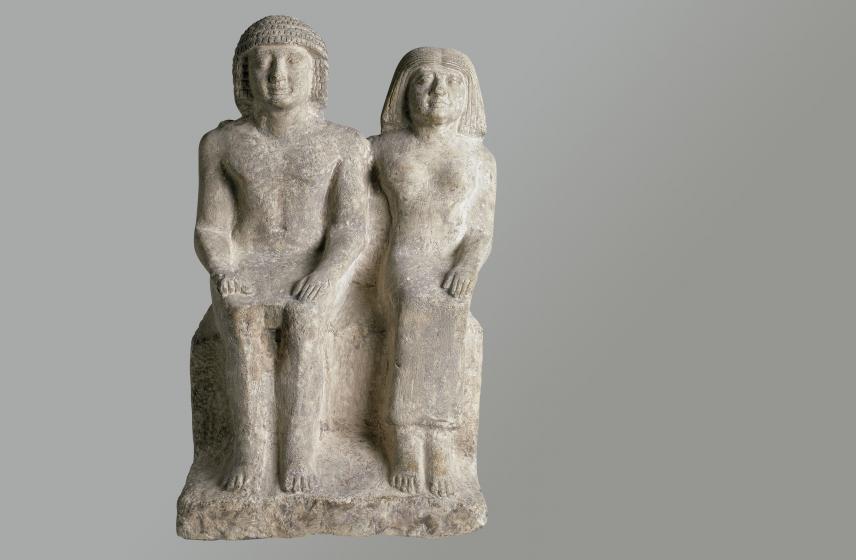Anonymous couple
Information sur l’artiste
Egypt

Couple anonyme, Ancien Empire.
Image © Lyon MBA – Photo Alain Basset
In the Old Kingdom, sculptures of one or more family members were placed in a funerary chapel over the grave. These groups were a celebration of one of the core values of Egyptian society: the family unit, and the couple in particular.
In this conventional configuration, the woman is sitting to the left of her husband with one arm placed tenderly around his shoulders. She is wearing a sheath dress and a mid-length wig parted in the middle, while he has a short loincloth and a curly wig. The expressions on their faces, frozen in eternal youth, bring the figures to life, despite the stereotyped way in which they are crafted. Minute traces of polychromy attest that the sculpture would once have been painted. This type of statue, depicting the happiness found on earth, was designed to ensure that joy continued in the afterlife.
This couple is part of the sculptural tradition of the 4th and 5th Dynasties, an era when burgeoning administrative structures – and with them increasing numbers of public servants – led to a standardisation and more widespread availability of models which had up until that point been the preserve of the elite.
Egypt, Old Kingdom, 4th-5th Dynasty, circa 2620-2350 B.C.
Limestone formerly painted
H. 36.5; W. 23; D. 19 cm
Acquired in 1810
Inv. H 1724





